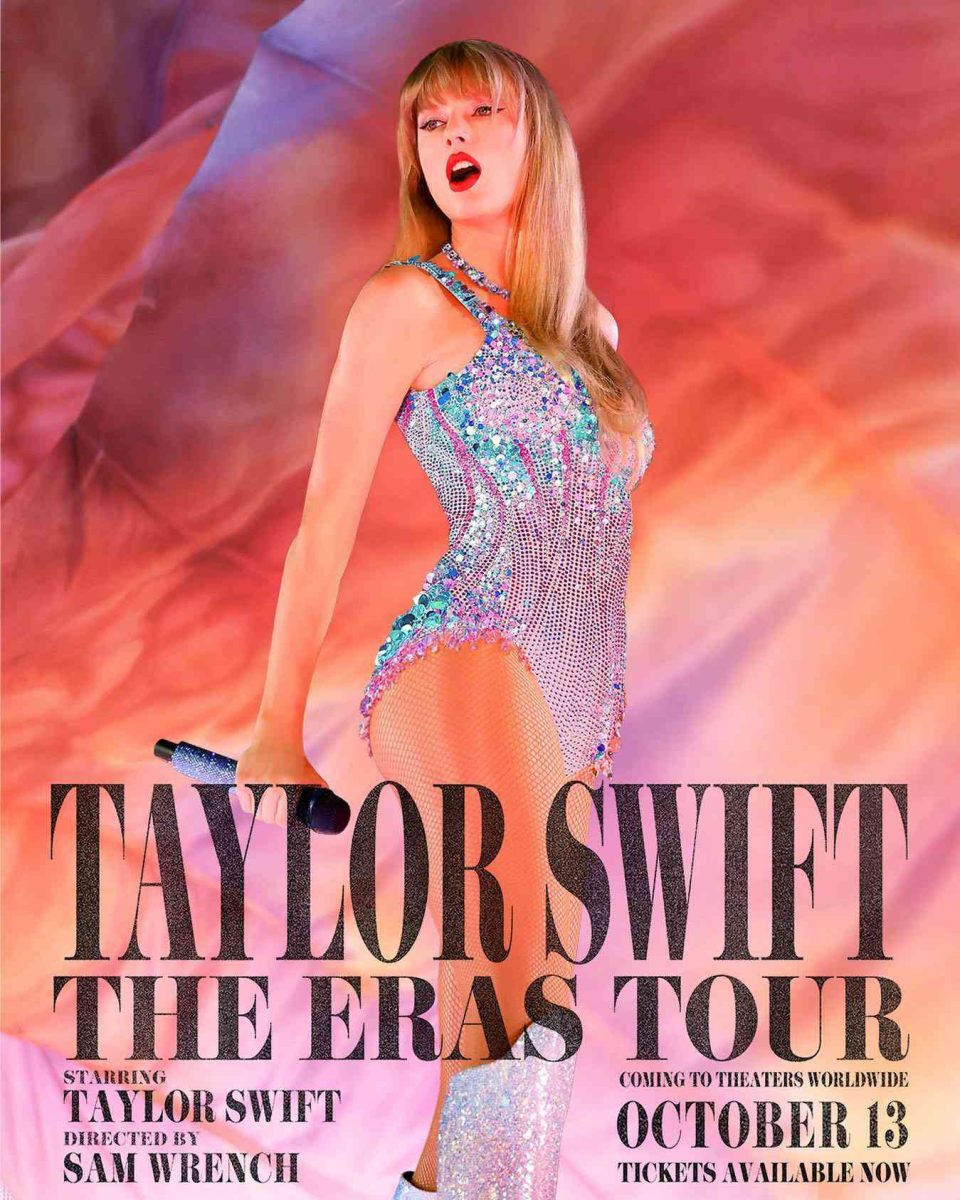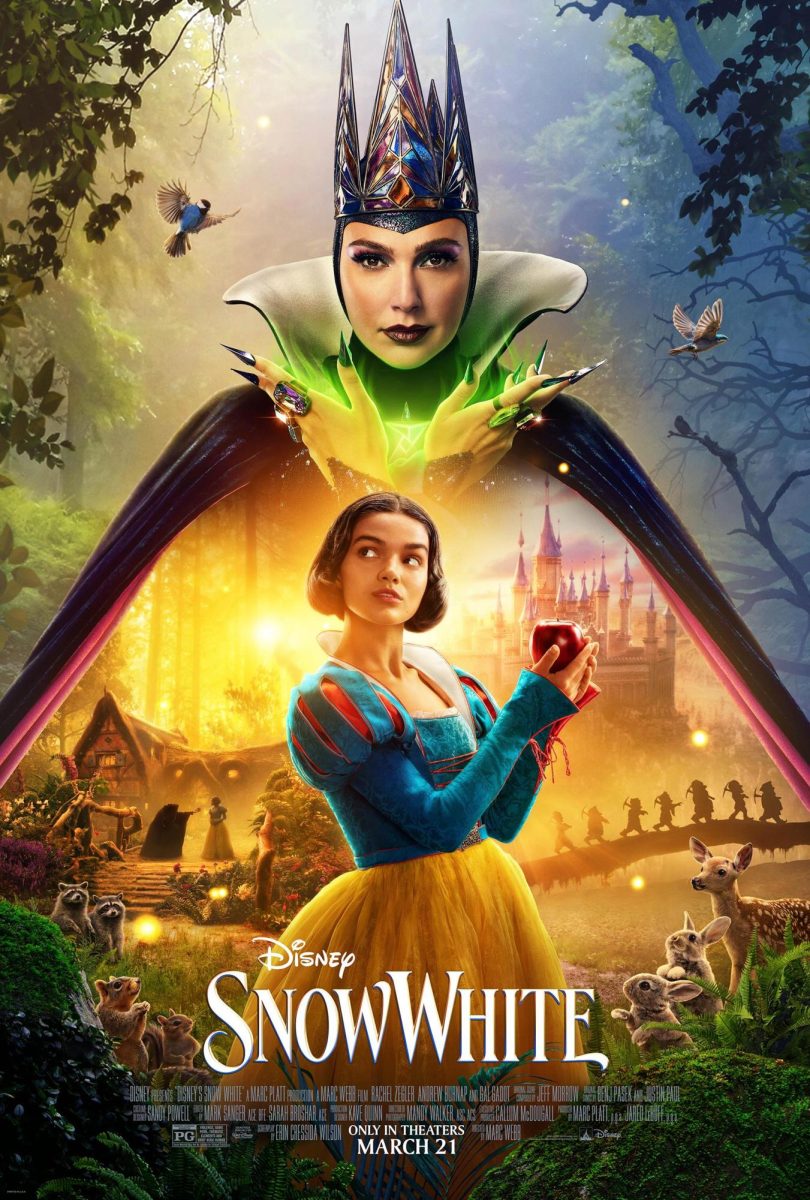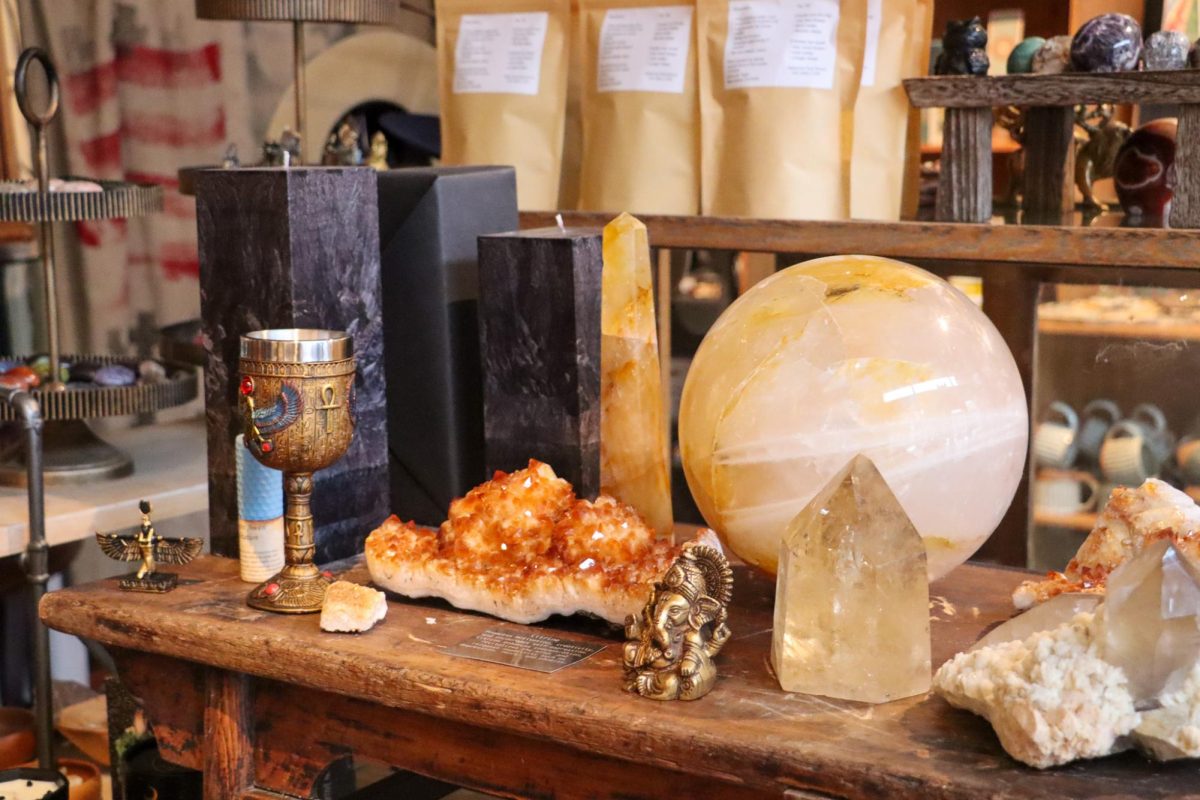Taylor Swift: The Eras Tour, directed by Sam Wrench, premiered Oct. 13. The musical provides a once-in-a-lifetime concert experience on the silver screen, giving those who could not attend the Eras Tour a chance to see Swift in life-size form.
The film opens with a stopwatch on the screen, counting down the final seconds until Swift’s opening song, “Miss Americana & the Heartbreak Prince.” In the final second, the Eras stage is revealed with Swift’s voice booming in the speakers. From then on, the film depicts a recording of the entirety of the three-hour show. To some, a recording of a concert may seem mundane, but from its lively fanbase to highlighted details, this film was exhilaratingly vibrant.
The camera angles provide an up-close look into the stage and Swift’s theatrical performance. These details make the film a worthwhile watch even for those who attended an Eras Tour concert, as many parts may have been overlooked or too hard to notice in the flurry of concert mania. Most of the film has the viewer on stage with Swift, unless it’s to show the phenomenal sets, lively dancers, or excited crowd. Swift’s shows are a medley of music and theatrical productions, making much of the film an intriguing visual spectacle.
In an effort to keep the film under three hours, the producers cut remarkable songs like “No Body No Crime,” “Wildest Dreams,” and “The Archer” out of the footage. This was a disappointing surprise, as those are some of the less mainstream, fan-favorite songs that Swifties looked forward to hearing in the film.
The energy in the movie theater was unlike any other. Swifties stood up to sing and dance along to songs. The theater aisles filled with Swifties singing and dancing together, demonstrating a strong community. This was the perfect replica experience for those who could not get tickets to the in-person Eras Tour.
Attending the Eras Movie is an experience in itself. As someone who went to the Eras tour and the movie, I had an exhilarating night at both. The Eras movie deserves 4.5/5 feathers, with its only flaw being the absence of some of Swift’s masterpieces.















